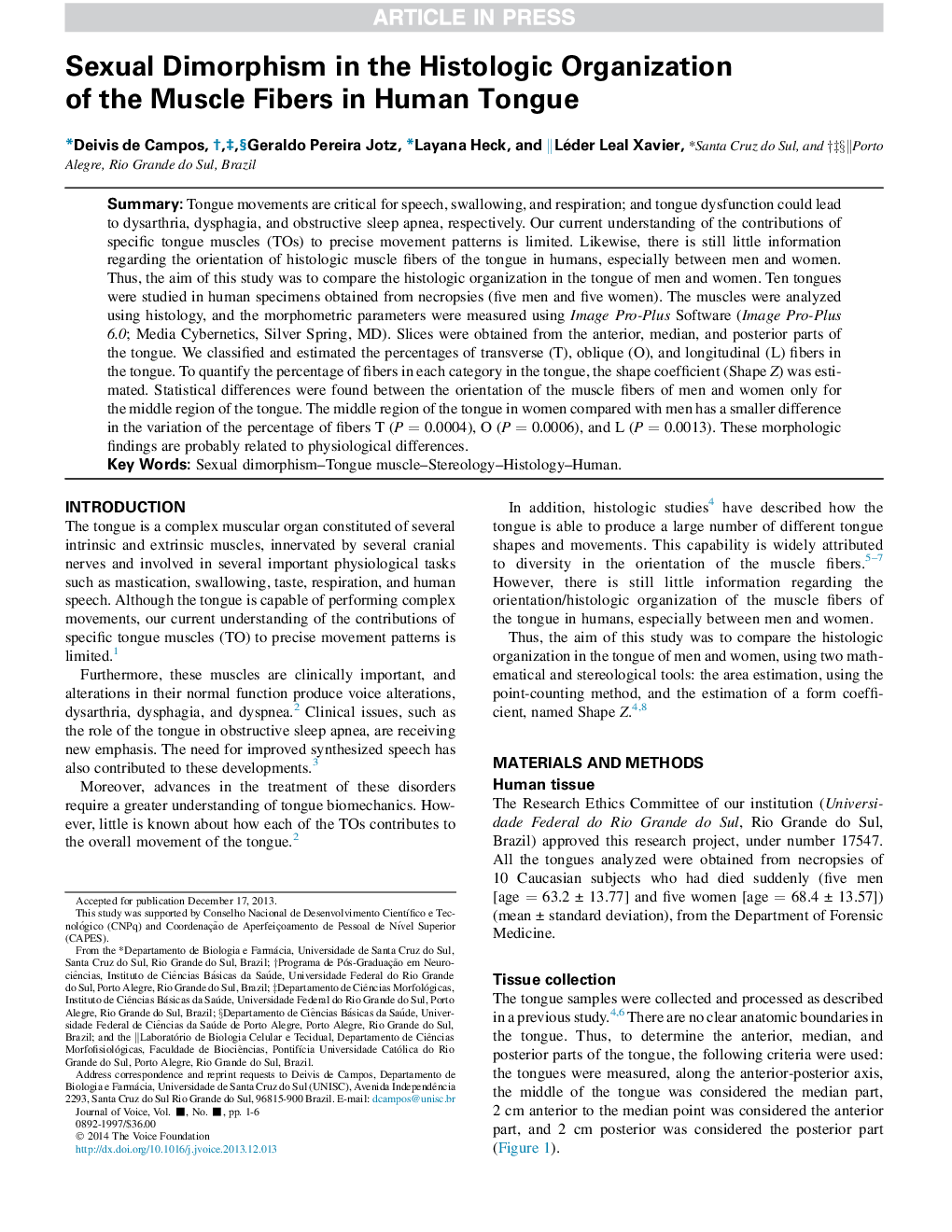| Article ID | Journal | Published Year | Pages | File Type |
|---|---|---|---|---|
| 1101784 | Journal of Voice | 2014 | 6 Pages |
Abstract
Tongue movements are critical for speech, swallowing, and respiration; and tongue dysfunction could lead to dysarthria, dysphagia, and obstructive sleep apnea, respectively. Our current understanding of the contributions of specific tongue muscles (TOs) to precise movement patterns is limited. Likewise, there is still little information regarding the orientation of histologic muscle fibers of the tongue in humans, especially between men and women. Thus, the aim of this study was to compare the histologic organization in the tongue of men and women. Ten tongues were studied in human specimens obtained from necropsies (five men and five women). The muscles were analyzed using histology, and the morphometric parameters were measured using Image Pro-Plus Software (Image Pro-Plus 6.0; Media Cybernetics, Silver Spring, MD). Slices were obtained from the anterior, median, and posterior parts of the tongue. We classified and estimated the percentages of transverse (T), oblique (O), and longitudinal (L) fibers in the tongue. To quantify the percentage of fibers in each category in the tongue, the shape coefficient (Shape Z) was estimated. Statistical differences were found between the orientation of the muscle fibers of men and women only for the middle region of the tongue. The middle region of the tongue in women compared with men has a smaller difference in the variation of the percentage of fibers T (P = 0.0004), O (P = 0.0006), and L (P = 0.0013). These morphologic findings are probably related to physiological differences.
Related Topics
Health Sciences
Medicine and Dentistry
Otorhinolaryngology and Facial Plastic Surgery
Authors
Deivis de Campos, Geraldo Pereira Jotz, Layana Heck, Léder Leal Xavier,
